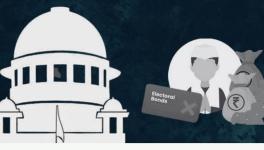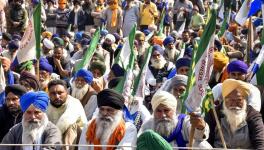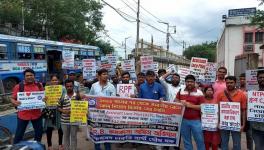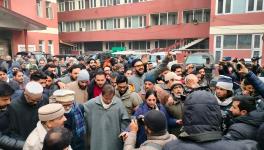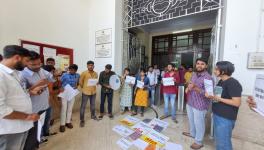Protests are a Legitimate Use of Public Spaces
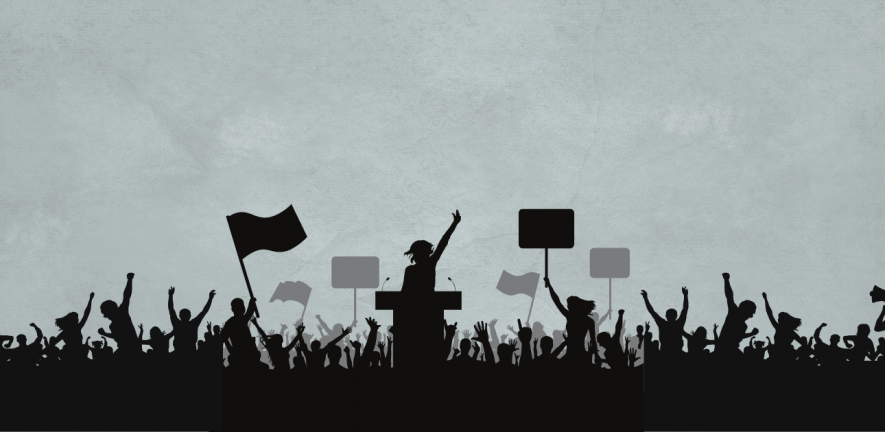
Representational Image.
Holding peaceful assemblies only at “designated” spaces makes them inferior to other “regular” activities conducted in a public space.
—–
A recent notable development in Karnataka that has garnered surprisingly little attention is the Karnataka High Court’s suo moto public interest litigation (‘PIL’) regarding traffic congestion caused due to processions, dharnas, protests, and the subsequent inconvenience it caused to citizens. More significantly, the court’s order in this regard that has major constitutional implications, especially concerning Article 19(1)(b) of the Constitution, which provides the fundamental right to peaceful assembly and consequently the right to peaceful protest within its ambit, has unfortunately been largely overlooked and passed over unremarked.
On August 15, the day India celebrated its 75th Independence Day, the police in Devanhalli, Bengaluru, arrested 72 farmers for protesting at the incorrect site. The farmers were arrested for not protesting at Freedom Park, which has been “designated” as the only spot for protests by the Karnataka High Court through its aforementioned order in its suo motu PIL.
Further, apart from the court’s order, the Karnataka government has passed the Licensing and Regulation of Protests, Demonstrations and Protest Marches (Bengaluru City) Order, 2021 under Section 31(1)(o) of the Karnataka Police Act, 1963, which came into effect in January this year. Under this order, the Licensing Authority – which is the Police Inspector in charge of the police station in respect of the protest which is to be organized within the limits of the concerned police station – has the power to approve the number of persons holding a protest at Freedom Park, depending on various factors, effectively empowering it to limit the number of protesters.
It is now illegal to protest at any place in Bengaluru apart from the spot so designated, that is, Freedom Park, thereby criminalising the right to freedom of protest, and heavily restricting its full and free exercise by citizens.
Thus, the cumulative effect of the government order and the high court’s order in the PIL is that protests in Bengaluru, are now heavily dictated by the police. Thus, simply put, it is now illegal to protest at any place in Bengaluru apart from the spot so designated, that is, Freedom Park, thereby criminalising the right to freedom of protest, and heavily restricting its full and free exercise by citizens.
This piece aims to engage with the government order and the court’s PIL order, the symbiotic relationship that protests and public spaces enjoy, looking at protests as legitimate uses of public spaces, and the consequent constitutional implications. The two sub-issues considered in this article are, first, the precedence or greater importance being awarded to the free flow of traffic and inconvenience caused due to the traffic over the right to protest; and secondly, the principle of sight and sound, which provides that protests should take place within sight and sound of their object or targeted audience, both of which are brought into question by both the court’s PIL order and the government order restricting protests to Freedom Park alone.
International legal perspective
The right to hold assemblies and demonstrations on public roads, and peaceful assembly as a legitimate use of a public space, have been consistently upheld by both international and regional human rights bodies. The United Nations (‘UN’) Human Rights Committee, in July 2020, adopted the General Comment No. 37 on the right of peaceful assembly enshrined under Article 21 of the International Covenant on Civil and Political Rights (‘ICCPR’), an international legal instrument which India ratified in 1979. Article 21 of the ICCPR enshrines the right to peaceful assembly. Article 21 protects peaceful assemblies irrespective of where they take place – outdoors, indoors, and online; in public and private spaces; or a combination thereof.
The UN Human Rights Council, in its joint report of the Special Rapporteur on the rights to freedom of peaceful assembly and of association and the Special Rapporteur on extrajudicial, summary or arbitrary executions on the proper management of assemblies issued in 2016, while noting that any restrictions imposed on peaceful assemblies needed to comply with international human rights standards, observed that assemblies are an equally legitimate use of public space as commercial activity or the movement of vehicles and pedestrian traffic. The joint report further observed inter alia that if the right is not to be deprived of substance, a certain level of disruption to ordinary life caused by assemblies, including disruption of traffic, annoyance and even harm to commercial activities, must be tolerated.
Significantly, the joint report also provides that the State shall facilitate the exercise of the right of peaceful assembly, and that the State’s obligation to facilitate includes the responsibility to provide basic services, including traffic management. Lastly, and perhaps most importantly, the joint report stipulated that freedom of peaceful assembly is a right and not a privilege, and as such, its exercise should not be subject to prior authorization by the authorities.
Among its practical recommendations, the Council recommended that States should not require organizers to obtain prior authorization to hold an assembly, in law or practice; where a notification system is in place, it must facilitate peaceful assembly, and must not operate as a de facto requirement for prior authorization.
The Special Rapporteur on the Rights to Freedom of Peaceful Assembly and of Association concurred with the assessment of the Organization for Security and Co-operation in Europe’s (‘OSCE’) Office for Democratic Institutions and Human Rights (‘ODIHR’) Panel of Experts that the free flow of traffic should not automatically take precedence over the freedom of peaceful assembly. Further, the European Court of Human Rights (‘ECtHR’), in Kuznetsov versus Russia (2008) noted that as a matter of general principle, any demonstration in a public place inevitably causes a certain level of disruption to ordinary life, including disruption of traffic, and that it is important for the public authorities to show a certain degree of tolerance towards peaceful gatherings if the freedom of assembly (guaranteed by Article 11 of the European Convention for the Protection of Human Rights and Fundamental Freedoms) is not to be deprived of all substance.
The principle of sight and sound stipulates that States have a positive obligation to ensure that protests take place within sight and sound of their object or targeted audience.
The joint report also endorses the ECtHR’s view in Kuznetsov that a certain level of disruption to ordinary life caused by assemblies, including disruption of traffic, annoyance, and even harm to commercial activities, must be tolerated if the right is not to be deprived of substance.
Further, the Inter-American Commission on Human Rights in its Report of the Office of the Special Rapporteur for Freedom of Expression in 2008, argued against the prioritization of vehicular traffic over the right to protest by stating, “Naturally, strikes, road blockages, the occupation of public space, and even the disturbances that might occur during social protests can cause annoyances or even harm that it is necessary to prevent and repair. Nevertheless, disproportionate restrictions to protest, in particular in cases of groups that have no other way to express themselves publicly, seriously jeopardize the right to freedom of expression. The Office of the Special Rapporteur is therefore concerned about the existence of criminal provisions that make criminal offense out of the mere participation in a protest, road blockages (at any time and of any kind) or acts of disorder that in reality, in and of themselves, do not adversely affect legally protected interests such as the life or liberty of individuals.”
Perhaps the most important obligation in the context of this piece, recognised at an international level, is the “principle of sight and sound”, which essentially stipulates that States have a positive obligation to ensure that protests take place within sight and sound of their object or targeted audience. This principle is included as a core obligation of the State under the OSCE ODIHR Guidelines on Freedom of Peaceful Assembly issued by the European Commission for Democracy through Law (Venice Commission) in 2019. This principle is also included in the 2012 Report of the Special Rapporteur on the rights to freedom of peaceful assembly and of association. General Comment No. 37 refers to this principle as well, providing that participants must, as far as possible, be enabled to conduct assemblies within sight and sound of their target audience.
Protests as a legitimate use of public spaces
The constitutional guarantee of the right to protest is protected under the Constitution’s Article 19(1)(a), which allows for freedom of speech and expression, and Article 19(1)(b), which guarantees to citizens the right to assemble peacefully and without arms. These rights are fundamental features of the democratic values of India. However, the right to protest is not absolute in nature, and is subject to reasonable restrictions as provided under Article 19(2) and (3), such as public order, decency or morality, contempt of court, and security of the State among others,.
In 2012, the Supreme Court in In re Ramlila Maidan Incident noted that citizens have a fundamental right to assembly and peaceful protest, which cannot be taken away by an arbitrary executive or legislative action. In the landmark decision of Maneka Gandhi versus Union of India (1978), the Supreme Court observed that it was obvious that every citizen must be entitled to participate in the democratic process if the meaning of democracy was the government of the people by the people, and that to enable them to intelligently exercise their right of making a choice, free and general discussion of public matters was absolutely essential.
By divorcing public spaces into two parts, one being “designated” for protests and the rest being free for the movement of traffic, both the Supreme Court and the Karnataka high court have attempted to artificially segregate what does not require to be differentiated.
Unfortunately, the Supreme Court has echoed the Karnataka high court’s sentiment on designating spots for protests in the Shaheen Bagh protests case, Amit Sahni versus Commissioner of Police & Ors. (2020). While the Shaheen Bagh case was not one of protests taking place in an undesignated area, but of a blockage of a public way which caused grave inconvenience to commuters, the court still went on to hold that “public ways and public spaces cannot be occupied in such a manner and that too indefinitely. Democracy and dissent go hand in hand, but then the demonstrations expressing dissent have to be in designated places alone.”
It is important to remember that the right to assemble peaceably and without arms is in essence, a right that enables the right to protest. Courts have taken a decisively narrow approach to the right by bestowing upon the State the power to “designate” specific sites as places where protests can be carried out. By divorcing public spaces into two parts, one being “designated” for protests and the rest being free for the movement of traffic, both the Supreme Court and the Karnataka high court have attempted to artificially segregate what does not require to be differentiated.
By creating such a division, the courts seem to have forgotten why protests are launched in the first place, and why they attract so many citizens – because they are fundamentally carried out in the larger public interest. The genesis of a protest is intrinsically related to public interest. Although the courts seem to have intended to balance the right to protest with the right of other citizens to commute, it has ended up creating an unnecessary and artificial segregation of “designated” spaces. A harmonious construction of these rights was what was required in these cases, and opportunity to do so has unfortunately been passed over by both the Supreme Court and the High Court.
Furthermore, by designating only certain spaces for protest, the Court has bequeathed conducting protests in public spaces as a secondary consideration, whereas pedestrians walking on sidewalks and roads, the flow of vehicular traffic, and conducting commercial and business activity are viewed as regular, legitimate occupation and use of public spaces. In a democratic country, it is imperative to hold the flow of vehicular traffic in a public space and holding a protest in a public space on an equal pedestal. Merely because protests may not be a daily occurrence or a routine use of a public space does not rob them of their legitimacy.
Therefore, peaceful assemblies as provided under Article 19(1)(b) should be considered an equally legitimate use of a public space; holding them only in “designated” spaces does not place them at an equal level as other routine matters, instead placing them at a firmly subordinate level to other “regular” activities conducted in a public space.
It is disappointing that not only is the executive seeking to curb the exercise of the right to protest, but the judiciary too has taken a narrow approach to the matter by affording traffic congestion more importance than a fundamental right under the Constitution.
It is also pertinent here that domestic courts take into account and actually apply the principle of sight and sound expounded by various international bodies that obligates States to conduct assemblies within sight and sound of their target audience, given that the nature of assemblies is typically expressive.
It is evident that any consideration for this principle has been utterly disregarded by the Karnataka high court in its order designating Freedom Park as the “designated spot” for protests to be held in Bengaluru. Ironically, it was this same high court which, in 2019, acknowledged that the right to protest was a basic feature of democracy while hearing a petition challenging the restriction of assemblies during the 2019 Citizenship (Amendment) Act protests.
Surprisingly, the court’s ire at the traffic congestion caused by protests isn’t directed to other large assemblies that cause similar such inconvenience to citizens: noisy marriage processions, political rallies, VIP convoys, religious processions, and public celebrations of festivals are a few examples that come to mind. Thus, the court has carved out a specific exception of conducting protests alone at a designated place, disregarding the fact that other such assemblies have an alike effect on traffic conditions and deeply inconvenience citizens as well. This distinction meted out to protests alone can only be termed as being manifestly arbitrary and discriminatory.
The role of a democratic State must undoubtedly be to find ways to facilitate and enable protests, debate and dialogue, and not seek to limit those. It is disappointing that not only is the executive seeking to curb the exercise of the right to protest, but the judiciary too has taken a narrow approach to the matter by affording traffic congestion more importance than a fundamental right under the Constitution.
Avanti Deshpande is a graduate of ILS Law College, Pune
Get the latest reports & analysis with people's perspective on Protests, movements & deep analytical videos, discussions of the current affairs in your Telegram app. Subscribe to NewsClick's Telegram channel & get Real-Time updates on stories, as they get published on our website.












